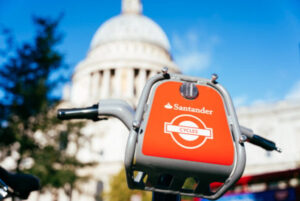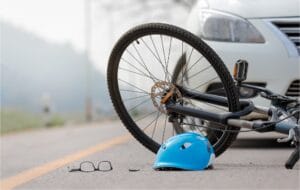Closing the roads around schools to traffic at pick-up and drop-off times has reduced polluting nitrogen dioxide levels by up to 23% and is strongly supported by parents, new research published by the Mayor Sadiq Khan reveals.
To measure the air quality benefits of the new School Streets, 30 cutting-edge sensors from the Breathe London network were installed at 18 primary schools across Brent, Enfield and Lambeth to record nitrogen dioxide levels. The air quality monitoring project, funded by FIA Foundation and Bloomberg Philanthropies, was launched in September 2020 to give the most accurate indication yet of how the School Streets scheme is working.
Since April 2020, almost 350 School Streets have been delivered across London with funding from Transport for London (TfL) and the boroughs to tackle children’s exposure to air pollution and improve their health.
Roads surrounding schools are closed to motor traffic at drop-off and pick-up times, enabling children to walk or cycle to school, reducing car trips and improving air quality. School Streets also provide space for social distancing and help to reduce road danger around schools, making journeys safer and easier.
Around half of London’s emissions come from road transport, and London’s toxic air already leads to thousands of premature deaths in the capital every year as well as stunting the development of young lungs and increasing cases of respiratory illness. Air pollution has also been linked to increased risk of contracting Covid-19 and experiencing the most serious effects.
TfL has also today published new survey results which suggest that interventions outside schools to make walking and cycling safer are popular with parents and carers and have contributed to a drop in car use. Parents and carers from 35 schools took part in the study and the results showed:
- 81 per cent of those surveyed at schools where measures had been implemented believed a School Street is suitable for their school
- 73 per cent of parents and carers at these schools agree with School Street measures remaining in place while social distancing is still required, with 77 per cent supporting the changes being kept in the long term subject to consultation
- Two thirds (66 per cent) of parents and carers at schools without School Street measures support their implementation while social distancing is still required and a majority of these parents (59 per cent) also support such measures in the long term subject to community engagement and consultation
- Since the pandemic, parents and carers reported walking to school more, and driving less, at both School Street schools and those without School Streets
- At schools with School Streets, parents and carers reported driving to school less as a result of both the coronavirus pandemic and the School Street. The School Street had a greater impact (-18 per cent) on reducing car travel to school compared to the impact of coronavirus (-12 per cent).
Measures introduced by the Mayor prior to the Covid-19 pandemic have already cut the number of state schools with illegal levels of pollution by 97 per cent – from 455 schools in 2016 to just 14 in 2019. But the Mayor is determined to continue to do more to tackle poor air quality around schools, which is why he recently launched the new London Schools Pollution Helpdesk – a free to use service for all London schools as part of plans to clean up toxic air at schools in the worst polluted areas of the capital, starting with the 14 remaining schools which are still exceeding legal limits for pollution.
The Mayor’s Streetspace plans have also made walking and cycling easier and have seen 90km of new or upgraded cycle lanes built or are under construction since May, along with more than 22,500 square metres of extra pavement space reallocated for people walking. The measures mean people are increasingly using bikes to get around their local area, access their local shops and for exercise, with recent TfL cycle count data showing cycling has increased by 22 per cent in outer London compared to spring 2019, with a seven per cent rise in inner London.
The Mayor of London, Sadiq Khan, said: “I am doing everything in my power to stop Londoners breathing air so filthy that it damages children’s lungs and causes thousands of premature deaths every year. Since 2016, there has been a 97 per cent reduction in the number of schools in areas which exceed the legal pollution limit and I’m committed to bringing that number down to zero.
“School Streets play an important role in enabling parents and children to walk, cycle or scoot to and from school which has so many benefits, not least in improving air quality. It’s great to see the huge reduction in nitrogen dioxide during pick up and drop off on schools streets – a time where countless children and adults would otherwise be exposed to dangerous emissions. Too many lives are already lost each year as a result of our city’s toxic air and the results of our monitoring study show just how much of a difference reducing car journeys through School Streets makes.”
Alex Williams, TfL’s Director of City Planning, said: “Enabling everybody across London to walk and cycle more is a vital part of making our capital safer, healthier and more sustainable place, and enabling parents and children to build active travel into their daily routines from a young age is particularly crucial. At a time that has led to some of the biggest ever changes to Londoners’ travel habits, this new research shows that School Street schemes are hugely popular with parents and have had a positive effect on their travel habits and perception of safety near their school. We’ll continue to work closely with schools, local communities and boroughs across London as we deliver further schemes across the capital to reflect the changing coronavirus situation.”
James Austin, Sustrans London Director, said: ‘This research backs up what Sustrans sees in our work across London – that School Streets make the school journey safer, cleaner and more fun. We’ve made huge progress in the past few months, the evidence is there and so is the demand from parents and children. Now with schools reopening we need to take urgent steps to make sure that every child in London is physically active and protected from air pollution and road danger.’
The air quality monitoring report can be found here: https://www.london.gov.uk/WHAT-WE-DO/environment/environment-publications/school-streets-air-quality-study
TfL’s survey results can be found here: https://tfl.gov.uk/corporate/publications-and-reports/cycling-and-walking
Transport for London’s (TfL) research also found:
- Parents and carers surveyed at schools with measures were far more likely to agree that there was enough space for people to socially distance at pick up and drop off times, with 60 per cent agreeing compared to 40 per cent at schools without School Streets. Enabling people to maintain a safe distance from others has been a central goal of TfL’s emergency measures to support walking and cycling since the start of the coronavirus pandemic. Parents and carers of School Streets pupils were also more likely to agree that there was less congestion than last year, with 39 per cent agreeing compared to 26 per cent at schools without School Streets.
- Attitudes towards the environment outside schools were significantly more positive at School Streets locations compared to schools without interventions. Fewer people were concerned about the danger posed by traffic on the street, with a ‘net agree’ (agree minus disagree) score of 29 per cent compared to 47 per cent for schools without intervention. Parents and carers at School Streets locations were also significantly more likely to agree that the street is easy to walk, cycle and scoot on and that it is safe and easy to cross the road on foot. Parents and carers at both School Streets locations and those at locations without interventions both voiced concerns about air quality, but these were reduced at School Streets, with -3 per cent satisfied compared to -33 per cent (agree minus disagree) at schools without School Streets.






















